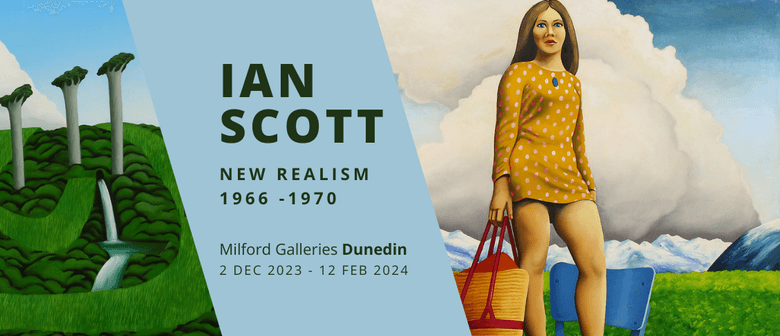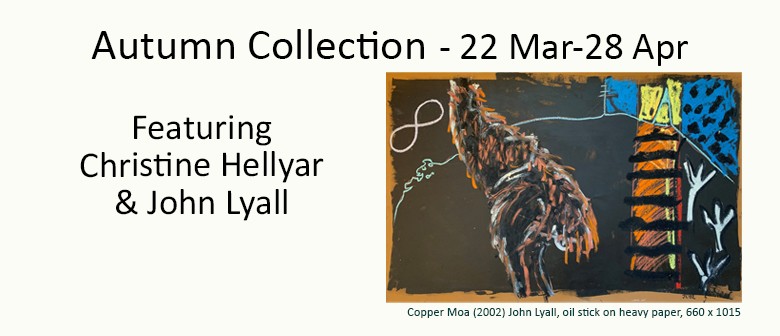Ian Scott: New Realism 1966 – 1970 (2023)
18 Dowling St, Dunedin, Otago
Ticket Information
Restrictions
Website
Listed by
Already appropriating and contrasting imagery far ahead of his time, as well as wanting to distance himself from the loosely brushed style of McCahon (then a painting lecturer at Elam), Ian Scott in 1967 (his honours year at Elam) wrote a thesis entitled “New Realism and Pop Art.”
In his thesis he pioneered an entirely new conversation in New Zealand art about both the New Zealand landscape and human presence in and upon it. Openly acknowledging the influence of Pop Art, especially Roy Lichtenstein, Scott used ironic contrast as a fundamental pictorial device. The extraordinarily innovative Untitled (1966) places the completely disparate together in a vertical triptych – a tourist landscape being observed if not actually experienced; a vignette of Auckland overlooking the harbour with a pōhutukawa blooming; a portion of a weather-boarded house where the vanishing point perspective leads the eye to portions of a wilderness.
In High Gloss (1967), Scott parodies suburban aspiration, using the diagonal geometry – such a feature of his later abstract Lattice works – of the weather-board clad house corners as the key element. In Batsman (Harold Larwood) (1967), his command of a restricted palette clearly evident, he recomposes space into sections using white on green.
Mini Skirt (1968), a major work presaging the Girlie Series to follow, Scott hides and reveals. He places a mini-skirted girl, holding a woven handbag on the ironic pedestal of a chair. He blurs in suggestive darkness the conjunction of her thighs and her skirt as she stares back at the viewer. Irony upon irony is layered into the perspective: a fashion-statement and a conversation about identity and time stands before a manicured hedge, framed from behind by two headlands, presenting (as if a theatre-stage) an alpine landscape much further back, itself diminished again by a massing cloud form.
In Cloud and Volcano (1970), Scott unites the landscape with another reality, owing more to a modernist point of view than Pop Art. It features bonsai kauri presented as nail-like concrete forms, the landscape itself being stylised, artificial and sculpted, acknowledging Māori earthworks. A rueful woman stares at the viewer, a stylised sprouting waterfall emerges from the patterned forest, a volcano rises like a triangular pimple before a rectangular slab of cloud. Contrasting reality and unreality, past and present, flowing forms and the geometry of line, the effect is surreal. Ian Scott’s inventiveness introduced a complexity not seen before in New Zealand art.
Log in / Sign up
Continuing confirms your acceptance of our terms of service.




Post a comment